Veneers in Seoul
Search and Compare the Best Clinics and Doctors at the Lowest Prices for Veneers in Seoul

Find the best clinics for Veneers in Seoul
With Medijump you can browse 9 facilities offering Veneers procedures in Seoul. The cheapest price available is $168 in Seoul
Veneers in South Korea
Price: $ 168
Veneers in Seoul
Price: $ 168
Veneers in Ilsan
Price: $ 300
Vietnam offers the best prices Worldwide
Price: $ 1
From 2 verified reviews
윤요미, 01 January 2020
Very kind and nice
From 1 verified reviews
Anh J., 29 December 2019
Amazing service and a great dentist. Thanks so much
From 1 verified reviews
Виктор Ли, 30 December 2019
Excellent dental clinic. Professional specialists, professors. There are Russian-speaking translators.
From 106 verified reviews
Chiqui Dee, 18 July 2020
I had a yellowish teeth since college and I was afraid of getting it white. Dentist was awesome. I have been to a few dentist and this Dentist is by far the most knowledgeable. His English team is excellent. They treat you like family. And, you actually look forward to your next check up. I would definitely recommend this clinic to anyone that needs a dentist.
From 3 verified reviews
이정덕, 23 February 2020
The nurse and doctor are very kind.
From 3 verified reviews
Hyeyoung Kwon, 22 August 2016
Facial treatment center is good
Minish Dental Hospital, located in Dogok dong, Seoul, South Korea offers patients Veneers procedures among its total of 3 available procedures, across 1 different specialties. The cost of a Veneers procedure ranges from $6,000 to $15,000, whilst the national average price is approximately $1,732. All procedures and treatments are undertaken by just a small team of specialists, with 2 in total at the Hospital, and they are not accredited by any recognized accreditations institutes
From 13 verified reviews
Muhsen Alblooshi, 27 March 2019
best place for braces
From 13 verified reviews
Howard C, 21 April 2020
B .. cheap but still very good at a level that is hard to find a dentist like here. There is no pain, and all the staff are so nice and kind that they pay and receive treatment, but I am so grateful that I would like to buy a gift next time,
- Home
- South Korea
- Seoul
Compare Before & After Photos of _procedure_photos.phpVeneers
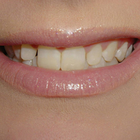

Front view
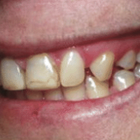
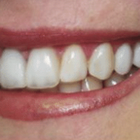
Half-side view
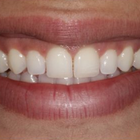
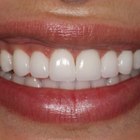
Front view
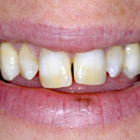
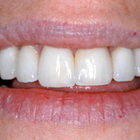
Front view
WHY US?
At Medijump, we're making medical easy. You can search, compare, discuss, and book your medical all in one place. We open the door to the best medical providers worldwide, saving you time and energy along the way, and it's all for FREE, no hidden fees, and no price markups guaranteed. So what are you waiting for?

Free

Best Price

Widest Selection

Risk-Free
What you need to know about Veneers in Seoul

Dental veneers are thin covers that are attached to the surface of teeth to enhance their appearance. The non-invasive dentral procedure is previously popular among those with damaged or discolored teeth. Nowadays, however, the procedure is seen as the ideal method of achieving the ‘perfect smile.'
Veneers can be used to hide uneven, misaligned or simply imperfect teeth. The veneers are cemented over the existing teeth and fixed into place – there are two main types of veneer; Porcelain and Composite. Porcelain veneers are more expensive and appear more natural, being made in a laboratory so require multiple visits. There is often the need to alter the existing teeth, removing some of the mass. Composite veneers are made of the same materials used for cavity fillings. They can usually be made quickly, and are sculpted directly on the teeth instead of in a laboratory. Thus allowing the procedure to be done in a day.
What does a Veneers Procedure Involve?
Veneers are used primarily for aesthetics. This type of treatment procedure is perfect for people who have gaps in their teeth, stains, as well as people who may have chipped a tooth. Veneers are custom-made shells designed to fit the shape of your teeth and to be attached to your front teeth to improve the size, shape, color, and length.
Two main types of veneers are:
- Composite Veneer - this type can be created by your dentist on the same day and directly applied to your teeth. You will only need a single appointment to complete the procedure.
- Porcelain Veneer - this type is manufactured in a laboratory. Opting for a porcelain veneer will require you to have two appointments. First, is to prepare your teeth (enamel removal) and mold a model of your teeth to be created in the lab. The second is to finally cement your veneers onto your teeth.
The most commonly used type of Veneer is the Porcelain Veneer as it appears more natural and can resist stains better than composite veneers. Besides the two main types of veneers, some dentists may also offer no-prep veneers. These may include specific brands of procelain veneers like Vivaneers and Lumineers. They are less invasive to apply since the layers of tooth under the enamel aren't removed.
In terms of anesthetics, local anesthesia is not usually required while undergoing the whole procedure. However, depending on how you handle pain and discomfort, you may request to receive local anesthesia or sedation.
Aside from giving you a pleasing smile, veneers are resistant to staining and offer the best fix to broken or damaged teeth.
How Long Should I Stay in Seoul for a Veneers Procedure?
This type of procedure is an outpatient treatment, meaning you may be able to go home after undergoing the procedure. However, you will be required to do a follow-up check-up with your dentist to assess the placement of your veneers and in most cases, the procedure has to be carried out over 2 separate occasions, just a day or two apart. Since this is a non-invasive treatment, stitches are not required, but you will be required to stay in Seoul for at least a few days.
What's the Recovery Time for Veneers Procedures in Seoul?
There is actually no recovery time after the placement of your veneers. You can also return back to your daily routines including exercise immediately after your trip. As for the enamel removal, you may experience some mild discomfort for about a week. It is best that you avoid very hot or cold foods, including hard, chewy or crunchy food. When your sensitivity wears off, you can return to your normal dietary habits.
What sort of Aftercare is Required for Veneers Procedures in Seoul?
Once your dental veneers have been placed and you have completed the whole procedure, you should commit yourself to good oral hygiene, regular visits to your dentist and a good healthy lifestyle. Dental Veneers can last beyond 10 years now, however, just like your natural teeth, veneers are also still susceptible to damage. This is why aftercare is very important to help with the longevity of your new teeth.
What's the Success Rate of Veneers Procedures in Seoul?
Over the past years, many studies have reported that over 91% of people who have had dental veneers experienced highly positive results. However, potential risks and side effects after undergoing this procedure are a possibility. Just like any other dental restoration, dental veneers can have some side-effects, for example:
- Tooth sensitivity - since this procedure will require the removal of some enamel, your teeth will become slightly sensitive, following the placement of your veneers.
- Response from gum tissues - your gum tissue might take some time to adjust to your newly placed veneers. Expect to have some minor inflammation and/or discomfort in your gums.
- Risk of trauma - once your teeth’s enamel is removed, it will become more sensitive, thus it will be even possible for the pulp within your teeth to die.
- Possible Issues with placement - it's possible for your teeth to have issues with decay or chipping along the outer portion of your veneers. Gum irritation may also be possible. Other problems may include rough-edged veneers and overhanging veneers.
- Overall Discomfort - experiencing some discomfort after the procedure is to be expected. If you are particularly sensitive, it is advisable that you take an over the counter medication to help you relax and treat your pain.
Are there Alternatives to Veneers Procedures in Seoul?
You also have to be aware that this type of treatment option is not for everyone. If you are not a good candidate to undergo the procedure, note that there are still possible alternatives that will be suited for you. These alternatives may include:
Orthodontics - if you have severely crooked teeth or malocclusion, dental veneers are not for you. You may want to consider a more comprehensive orthodontic procedure to treat your case.
Dental crowns - these are quite similar to dental veneers. These are also custom-made to match the shape of your teeth. However, unlike veneers, a crown extends all the way around your tooth, meaning your dentist will remove a large portion of your dental structure. These crowns are perfect for patients who have considerable damage that affects the strength and structure of their teeth.
Bonding - often called composite veneers. This is typically for patients with an insufficient amount of tooth enamel.
Whilst the information presented here has been accurately sourced and verified by a medical professional for its accuracy, it is still advised to consult with your doctor before pursuing a medical treatment at one of the listed medical providers
No Time?
Tell us what you're looking for and we'll reachout to the top clinics all at once
Enquire Now

Popular Procedures in Seoul
Prices Start From $1

Prices Start From $1

Prices Start From $48

Prices Start From $1

Prices Start From $1

Prices Start From $1

Prices Start From $11

Prices Start From $45

Recommended Medical Centers in Seoul for Veneers

- Interpreter services
- Translation service
- Religious facilities
- Medical records transfer
- Medical travel insurance
- Health insurance coordination
- TV in the room
- Safe in the room
- Phone in the room
- Private rooms for patients available

- Interpreter services
- Translation service
- Religious facilities
- Medical records transfer
- Medical travel insurance
- Health insurance coordination
- TV in the room
- Safe in the room
- Phone in the room
- Private rooms for patients available

- Interpreter services
- Translation service
- Religious facilities
- Medical records transfer
- Medical travel insurance
- Health insurance coordination
- TV in the room
- Safe in the room
- Phone in the room
- Private rooms for patients available

- Interpreter services
- Translation service
- Religious facilities
- Medical records transfer
- Medical travel insurance
- Health insurance coordination
- TV in the room
- Safe in the room
- Phone in the room
- Private rooms for patients available

- Interpreter services
- Translation service
- Religious facilities
- Medical records transfer
- Medical travel insurance
- Health insurance coordination
- TV in the room
- Safe in the room
- Phone in the room
- Private rooms for patients available

- Interpreter services
- Translation service
- Religious facilities
- Medical records transfer
- Medical travel insurance
- Health insurance coordination
- TV in the room
- Safe in the room
- Phone in the room
- Private rooms for patients available

- Interpreter services
- Translation service
- Religious facilities
- Medical records transfer
- Medical travel insurance
- Health insurance coordination
- TV in the room
- Safe in the room
- Phone in the room
- Private rooms for patients available

- Interpreter services
- Translation service
- Religious facilities
- Medical records transfer
- Medical travel insurance
- Health insurance coordination
- TV in the room
- Safe in the room
- Phone in the room
- Private rooms for patients available

- Interpreter services
- Translation service
- Religious facilities
- Medical records transfer
- Medical travel insurance
- Health insurance coordination
- TV in the room
- Safe in the room
- Phone in the room
- Private rooms for patients available

- Interpreter services
- Translation service
- Religious facilities
- Medical records transfer
- Medical travel insurance
- Health insurance coordination
- TV in the room
- Safe in the room
- Phone in the room
- Private rooms for patients available
Veneers in and around Seoul
About Seoul
Seoul is the capital city of South Korea and is one of the most affluent cities in Asia with high per capita income. Seoul is a city of differences as you can find anything from ancient monuments and palaces to modern skyscrapers. Every year the city attracts over 10 million tourists from different parts of the world. While some visit Seoul to enjoy its rich culture, others come to experience the fascinating metropolitan vibe, large numbers of medical tourists visit this busy city to undergo various medical procedures for cheaper prices and to enjoy the Korean hospitality. As per reports from the South Korean Ministry of Health & Welfare, the number of medical tourists in 2016 increased to 364,000, which is 23% more than in 2015. Some of the more popular procedures sought-after in Seoul are gynecology related treatments, stem cell therapy, treatments in neurology & endocrinology, laser treatments, transplants, and cardiology.
According to the Ministry of Health and Welfare, most medical tourists are from China, Uzbekistan, UAE, Japan, and Canada. Seoul is dynamically emerging as one of the most preferred destinations for medical tourism. The city proudly houses one JCI accredited hospital. The other top-rated medical hospitals include the Severance Hospital, Asan Medical Center, Seoul National University Hospital, MizMedi Women's Hospital. The world-class hospitals comprise of VIP rooms, exceptional medical facilities, and highly-reputed physicians. Doctors are fluent in English, Korean, Japanese, and French.
Popular Areas in Seoul
The beautiful River Han flows through the heart of the city. It divides Seoul into North and South and you will find most of the ancient palaces and historical sites in the North. The Southside is quite modern and trendy with neighborhoods like Gangnam which is also the business hub of the city. It is also the residential part of the city with many apartments, and shopping malls.
- River Han: Is the favorite location for both locals and tourists. Here, you can enjoy indulging in exciting water activities such as windsurfing, water skiing, fishing, sailing, and swimming. The banks of the river are the perfect place to lounge and see the lights of the city at night.
- Banpo Bridge: Connects the districts Seocho and Yongsan and It was the first double-deck bridge built in South Korea and is covered with 10000 lights and the Rainbow Fountain's colored water rains down the side of the bridge.
- Gangnam: It is the most trendy neighborhood and is home to Asia's largest shopping mall, COEX, and several high-end restaurants.
- Hongdae: Four Korean Universities lie close to the neighborhood. Hongdae houses a number of theme-based restaurants and an array of boutiques that cater to the needs of college-goers. Several music venues and glitzy nightclubs make it a perfect place to enjoy the vibrant nightlife.
- Myeongdong: Is the best and the largest shopping destination in Korea. It is a shopping mega where you can find clothes, cosmetics, stylish handbags, shoes and accessories, and Jewelry at affordable prices.
Weather and Climate in Seoul
As Seoul lies close to the coast of the Yellow Sea, the climate is continental. Summer and Winter are the two distinct seasons in Seoul. Summer is sultry, hot, and rainy, whereas winter is cold and sunny. The transitional periods are the spring and autumn, which are mild and pleasant.
- Winter: November to February. The average temperature is around 0°C during winter. The cold air blows in from Asia and during the night time, the temperature can drop to -20°C but it rarely snows during winter.
- Spring: March to May. Spring is mild and it rains occasionally.
- Summer: June to August. Seoul receives about 80 mm of rainfall during the summer season. July is the wettest month of the year. The temperature can rise to 35°C during the hot summer days.
- Autumn: September-October. Autumn is pleasant and rainfall gradually decreases during these months.
Getting around in Seoul
Incheon International Airport lies 48 km west of Seoul. It is the largest in the country and one of the busiest airports in the world. The airport is luxurious with an ice-skating rink, casinos, and spas. The airport operates several domestic and international flights to varied parts of the world.
Seoul has one of the finest public transportation systems in the world.
- Seoul Metropolitan subway: It is the fastest and cheapest mode of transportation. There is a total of 22 lines in operation and it costs 0.44$ for a single journey. You can buy tickets at the vending machines found in all subway stations.
- Seoul public buses: There are four different types of buses running in Seoul, each one covering different routes. The cost varies from 0.92$ to $1.63, depending on the bus type and the distance traveled.
- Taxis: Are expensive and are ideal for a large group of people. Regular, deluxe, jumbo, and International taxis are available. The major differences being the size and fare.
Tourist visa in Seoul
South Korea exempts the citizens of 117 countries from obtaining a valid tourist visa to enter the country. Australia, Chile, Greece, Germany, Hungary, Italy, Mexico, Russia, Switzerland, UK, US are some of the visa-exempted countries. They can stay visa-free for a maximum of 90 days.
Citizens of countries like India, China needs to apply for a tourist visa with all the required documents. The visa fee comes to around $30.
Additional Information
- The official currency of South Korea is the Korean Republican Won (KRW). One US dollar is approximately equivalent to 1149 KRW.
- You can find ATMs across the City. Some accept foreign cards and dispense cash. You can exchange your currencies to KRW in banks and money exchange booths.
- Hangul is the national and official language of South Korea. Koreans who are under the age of 40 years understand and speak English better than the rest of the locals.
- Most people in Korea are not affiliated with any religion. The same holds true in Seoul. Though, a small number of people practice Confucianism and Buddhism.
- Some of the public holidays in Seoul include New Year's Eve, Korean New Year, Buddha's birthday, Constitution day, Harvest festival, Hangeul day and Christmas.
Popular Searches
- Plastic Surgery in Thailand
- Dental Implants in Thailand
- Hair Transplant in Thailand
- Breast Augmentation Thailand
- Gastric Sleeve in Thailand
- Gender Reassignment Surgery in Thailand
- Laser Hair Removal in Bangkok
- Botox in Bangkok
- Dermatology in Bangkok
- Breast Augmentation in Bangkok
- Coolsculpting in Bangkok
- Veneers in Turkey
- Hair Transplant in Turkey
- Rhinoplasty in Turkey
- Stem Cell Therapy in Mexico
- Rhinoplasty in Mexico
- Liposuction in Mexico
- Coolsculpting in Tijuana
- Rhinoplasty in Korea
- Scar Removal in Korea
- Gastric Sleeve in Turkey
- Bone Marrow Transplant in India
- Invisalign in Malaysia
- Plastic Surgery in the Dominican Republic
- Tummy Tuck in the Dominican Republic
- Plastic and Cosmetic Surgery in Poland
- Rhinoplasty in Poland
- Hair Implant in Poland
- Dental Implants in Poland
- IVF in Turkey








